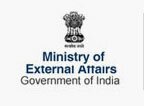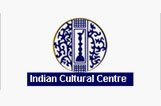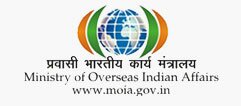Higher Education in India1. Since ancient times, India has been a centre for learning. Today, India has one of the most comprehensive higher education systems in the world. It is also one of the leading countries in the world providing high quality education to its citizens as well as to students and scholars from all over the world. 2. Education in India is comparable to the best institutions in the world and costs much less compared to other developed countries. The high quality of education, low cost and India’s geographical proximity has made Indian institutions of higher learning one of the most sought after places for the Malaysian students for pursuing higher studies. 3. The universities and other specialized institutions of higher learning in India offer a wide range of subjects from liberal arts to nuclear science. Most of the universities in India have a federal structure consisting of affiliated colleges in one tier and university departments on the other. In general, the affiliated colleges offer undergraduate courses, while the university departments offer opportunities for postgraduate studies and advanced research. 4. Presently, about 28.6 million students are enrolled in 723 Universities (including institutions of national importance), 37,204 colleges and 11,356 diploma level institutions in India. These institutions impart courses in various disciplines, such as Engineering and Technology, Computer Sciences, Information Technology, Bio-technology and Bio-informatics, Medical, Dental, Nursing, Pharmacy and Para-medical, Agriculture/Veterinary Sciences, Dairy Technology and Fisheries, Arts & Fine Arts, Humanities, Social Sciences, Commerce, Science & Management, Hotel Management & Catering Technology, Travel and Tourism, etc. The academic programs are offered at the Vocational Diploma, Under-graduate, Post-Graduate and Doctoral levels. Public expenditure on higher education in India is currently pegged at 18 billon US Dollars. 5. India follows the 10+2 system of school education, except in the state of Karnataka where a 2-year Pre-University is offered after completion of 10 years of schooling. The 10 years of schooling is followed by 2 years of Higher Secondary schooling, which is commonly known as the 10th and 12th standard in India. Foreign students must have the equivalent qualification to get admission to Diploma/Bachelor degrees in India. The 10th standard equivalent qualifications are SPM / ‘O’ Level and the 12th standard equivalent qualifications are STPM, ‘A’ Level, International Baccalaureate (IB), American High School Diploma, 2 years of Canadian Pre-University and 2 years of South Australian Matriculation (SAM). 6. Many Universities in India require that foreign students obtain an ‘Equivalence Certificate’ from the Association of India Universities (AIU), New Delhi, and this is particularly applicable for applying to Medicine and Dentistry courses, as per Medical Council of India (MCI) and Dental Council of India (DCI) regulations. The procedure to obtain the Equivalence Certificate is available in the link indianhighcommission.com.my/equivalence_certificate.html. 7. The annual academic session in India starts in July. The admission process starts around April/May or sometimes even earlier. Admission is offered on the basis of written entrance tests/interviews. Some universities/institutions reserve a limited number of seats for foreign and non-resident Indian (NRI) students.
8. In addition, The Indira Gandhi National Open University (IGNOU) which was established in 1985 by an act of Parliament, emerged as an leading international institution in the field of Open and Distance Learning. IGNOU has a large number of programmes, ranging from purely academic to technical, professional and vocational at various levels leading to award of Competency Certificates, Diplomas, Bachelor’s, Master’s and Doctor’s degree to successful candidates. Many of these programmes are modular in nature. For more details, please visit www.ignou.ac.in 9. There are also 13 State Open Universities in India, which are single mode institutions, which means they provide education only in the distance mode. These universities cater to people who are unable to pursue regular courses due to various reasons. A list of all the 13 State Open Universities in India may kindly be seen at the following URL: http://mhrd.gov.in/state_open_hindi
|
||||||||||||||||||





